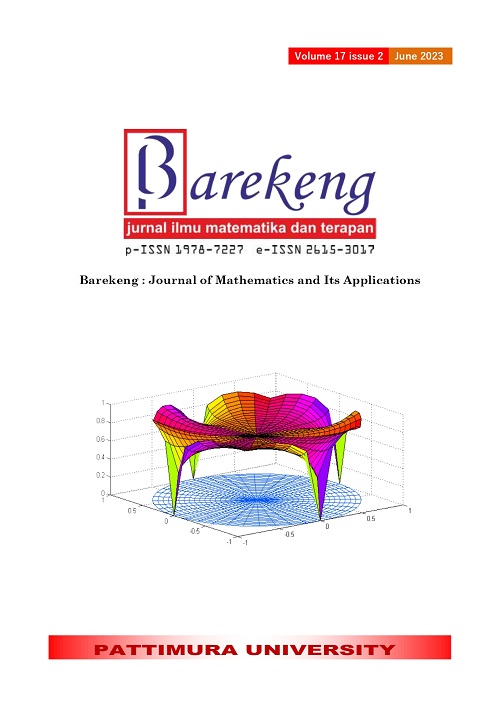IMPLEMENTATION AND COMPARISON IN USING STATE PATTERN ON MAIN CHARACTER MOVEMENT (CASE STUDY : POCONG JUMP VIDEO GAME VERSION 1.0)
Abstract
Game development success is often hard to achieve due to various problems such as performance issues, malfunctioning features, and poorly organized program structure. The problems that arise can be prevented by using the design pattern as a game programming architecture from the beginning of development. By implementing a design pattern, the process of developing video games can be made easier and simplified. The development team can focus its efforts on producing better quality video games. In this study, design patterns that would be used are state pattern and finite state machine. The state pattern is implemented by encapsulating the character's behavior in a class called state. Finite state machine will then facilitate the transition of states caused by user/player input or variable value changes. State pattern and finite state machine is tested with test case and game performance is tested with software metric. The result obtained from this study are state pattern and finite state machine have a valid component structure and could improve performance efficiency in video games.
Downloads
References
Kneoema, “Top 100 Countries by Game Revenues,” 2019. https://knoema.com/infographics/tqldbq/top-100-countries-by-game-revenues# (accessed Aug. 22, 2022).
P. S. Dewi and S. Sintaro, “Mathematics Edutainment Dalam Bentuk Aplikasi Android,” Triple S (Journals Math. Educ., vol. 2, no. 1, pp. 1–11, 2019.
L. Bennis, K. Kandali, and H. Bennis, “An Authoring Tool for Generating Context Awareness Mobile Game Based Learning,” Int. J. Emerg. Technol. Learn., vol. 17, no. 2, pp. 273–281, 2022.
J. D. Bayliss, “Developing games with data-oriented design,” in Proceedings of the 6th International ICSE Workshop on Games and Software Engineering: Engineering Fun, Inspiration, and Motivation, 2022, pp. 30–36.
F. S. Pramana, “Penerapan Konsep State Pattern Pada Game Engine (Studi Kasus Game Wipe It Off).” Universitas Brawijaya, 2018.
R. Nystrom, “Game Programming Patterns: Robert Nystrom: 9780990582908: Amazon. com: Books 1 edition., Genever Benning.” 2014.
S. Cao, F. Wang, L. Wang, C. Fan, and J. Li, “DNA nanotechnology-empowered finite state machines,” Nanoscale horizons.
V. André, R. A. S. S. Victório, and G. C. A. Coutinho, “Persistent State Pattern.”
M. F. Rahadian, A. Suyatno, and S. Maharani, “Penerapan metode finite state machine pada game ‘The Relationship,’” 2017.
S. Sintaro, “RANCANG BANGUN GAME EDUKASI TEMPAT BERSEJARAH DI INDONESIA,” J. Inform. dan Rekayasa Perangkat Lunak, vol. 1, no. 1, pp. 51–57, 2020.
M. Mustofa, S. Sidiq, and E. Rahmawati, “Penerapan Finite State Machine Untuk Pengendalian Animasi Pada Video Game Rpg Nusantara Legacy,” Jusikom J. Sist. Komput. Musirawas, vol. 3, no. 1, pp. 1–10, 2018.
T. Minkkinen, “Basics of Platform Games,” 2016.
F. Marzian and M. Qamal, “Game RPG ‘The Royal Sword’ Berbasis Desktop Dengan Menggunakan Metode Finite State Machine (FSM),” J. Sist. Inf., vol. 1, no. 2, 2017.
A. N. Hasibuan and T. Dirgahayu, “Pengujian dengan Unit Testing dan Test case pada Proyek Pengembangan Modul Manajemen Pengguna,” AUTOMATA, vol. 2, no. 1, 2021.
P. Kaur, “A Review of Software Metric and Measurement,” Int. J. Comput. Appl. Inf. Technol., vol. 9, no. 2, p. 187, 2016.
Copyright (c) 2023 Sanriomi Sintaro, Bernard Bernard, Ade Surahman, Luther Alexander Latumakulita, Mahardika Inra Takaendengan, Noorul Islam

This work is licensed under a Creative Commons Attribution-ShareAlike 4.0 International License.
Authors who publish with this Journal agree to the following terms:
- Author retain copyright and grant the journal right of first publication with the work simultaneously licensed under a creative commons attribution license that allow others to share the work within an acknowledgement of the work’s authorship and initial publication of this journal.
- Authors are able to enter into separate, additional contractual arrangement for the non-exclusive distribution of the journal’s published version of the work (e.g. acknowledgement of its initial publication in this journal).
- Authors are permitted and encouraged to post their work online (e.g. in institutional repositories or on their websites) prior to and during the submission process, as it can lead to productive exchanges, as well as earlier and greater citation of published works.






1.gif)



